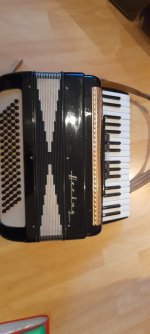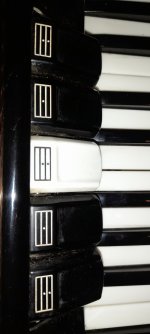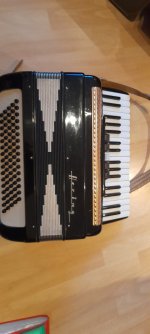Tongle
They said it was easy! They lied!
Hi folks,
I thought I'd say hello.
I, like many, have a room full of instruments from mandolin, guitar, synths to melodeon and flute. Guess I just love playing music.
After years as a rock / am-dram guitarist I've got back into English / Irish music which funnily enough is where I began
Just bought a 2nd hand Hering 80 bass Accordion. It has a powerful clear sound but when I select 2 voices the tuning seems off to me (very warbly).
Bass end sounds good so I think it's one set of treble reeds which need tweaking.
Does anyone know of a technician/repair in the Northwest of UK (Greater Manchester)?
I know there's the Accordion Shop but postage would be extortionate. Shame because it used to be in Rochdale too but closed.
Any help greatly appreciated.
In the meantime I can begin my learning journey with one voice and some bass which is fine for now.
I thought I'd say hello.
I, like many, have a room full of instruments from mandolin, guitar, synths to melodeon and flute. Guess I just love playing music.
After years as a rock / am-dram guitarist I've got back into English / Irish music which funnily enough is where I began
Just bought a 2nd hand Hering 80 bass Accordion. It has a powerful clear sound but when I select 2 voices the tuning seems off to me (very warbly).
Bass end sounds good so I think it's one set of treble reeds which need tweaking.
Does anyone know of a technician/repair in the Northwest of UK (Greater Manchester)?
I know there's the Accordion Shop but postage would be extortionate. Shame because it used to be in Rochdale too but closed.
Any help greatly appreciated.
In the meantime I can begin my learning journey with one voice and some bass which is fine for now.



